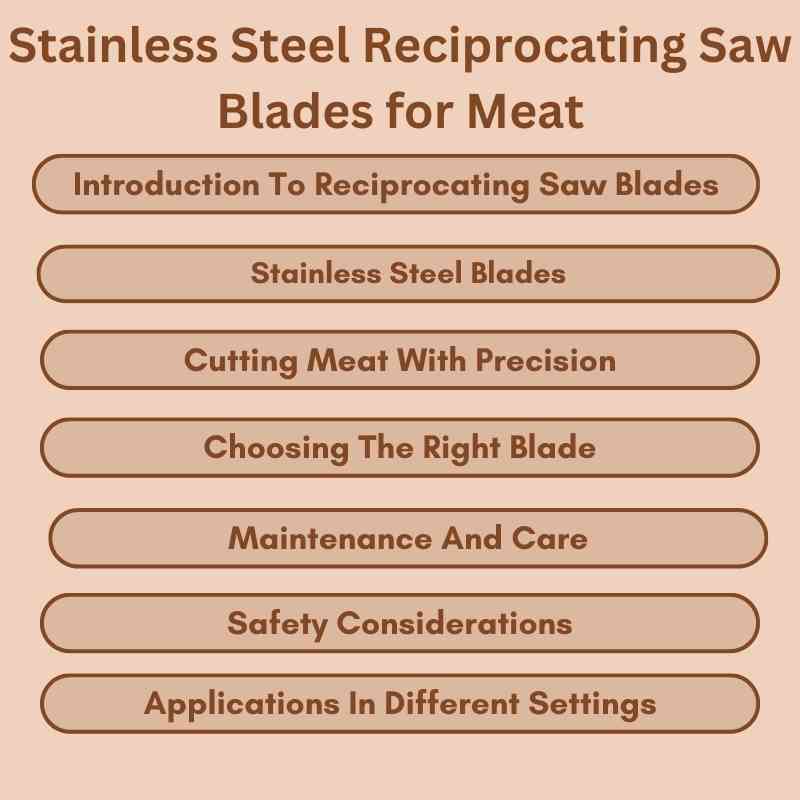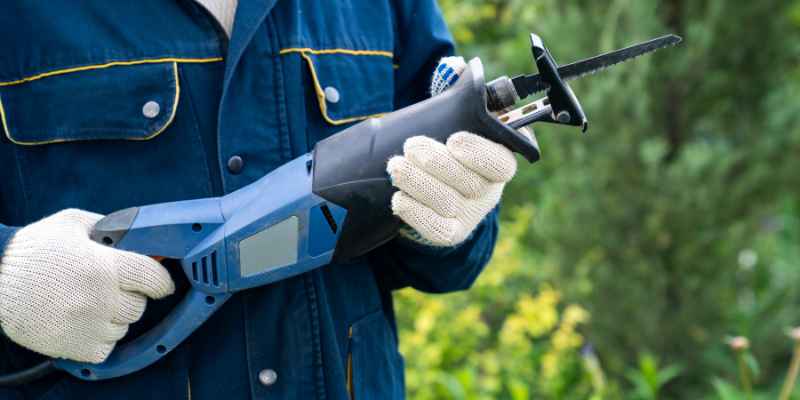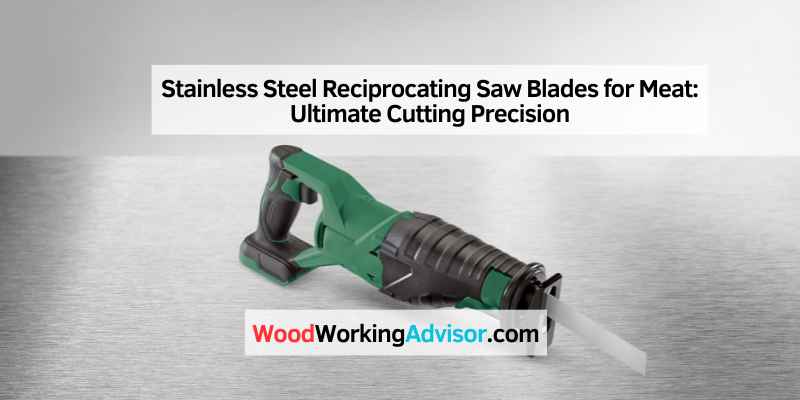Stainless steel reciprocating saw blades for meat ensure precision cuts and durability. They are ideal for butchers and meat processing.
Stainless steel reciprocating saw blades are essential for meat processing. They offer superior strength and corrosion resistance, making them perfect for cutting through tough meat and bones. These blades are designed to provide clean, precise cuts, reducing waste and improving efficiency.
Their durability ensures long-lasting performance, even with frequent use in commercial settings. Easy to clean and maintain, stainless steel blades also meet hygiene standards, crucial for food processing. Ideal for butchers, meat processors, and home cooks, these blades enhance productivity and ensure consistent results. Investing in high-quality stainless steel reciprocating saw blades is a smart choice for any meat-cutting operation.
Introduction To Reciprocating Saw Blades
Reciprocating saw blades cut through different materials. Stainless steel blades are perfect for cutting meat. These blades stay sharp longer. They are easy to clean and resist rust. Using these blades saves time in the kitchen. They make meat cutting quick and easy.
Different saw blades are used for different tasks. Here are some types:
- Wood blades are for cutting wood.
- Metal blades can cut metal pieces.
- Stainless steel blades are best for meat.
- Multi-purpose blades can cut various materials.

Stainless Steel Blades
Stainless steel is very strong. It does not rust. It stays sharp for a long time. These blades are easy to clean. They are also safe for food.
Other materials can rust. They can also get dull quickly. Stainless steel stays sharp longer. It is also more durable. This means fewer replacements. Using stainless steel is cost-effective. It also ensures clean cuts.
Cutting Meat With Precision
Precision is key in cutting meat. Uniform slices cook better and look nicer. Accurate cuts also reduce waste. Uneven cuts can spoil the taste. Clean cuts keep meat juicy and tender.
Use a sharp blade for clean cuts. Hold the meat steady on a cutting board. Guide the saw slowly and smoothly. Measure your cuts to ensure they are even. Practice makes you better at cutting meat.
Choosing The Right Blade
The right blade size is very important. Small blades are good for small cuts. Large blades are best for big cuts. Blade thickness matters too. Thicker blades are stronger. Thin blades are more flexible. Always pick the right size and thickness for the job.
Teeth on the blade need to be sharp. Some blades have fine teeth. Fine teeth make smooth cuts. Other blades have coarse teeth. Coarse teeth cut faster. Choose the right tooth configuration. This will help you get the best results.
Maintenance And Care
Always clean the blade after each use. Use warm soapy water for washing. Dry the blade thoroughly to prevent rust. Store in a dry place to keep it in good condition. Avoid using harsh chemicals that can damage the blade.
Check the blade regularly for dullness. Sharpen the blade using a fine grit stone. Replace the blade if it becomes damaged or too worn. Keep spare blades on hand for quick replacements. Proper care extends the blade’s life.
Safety Considerations
Always hold the saw firmly. Keep your fingers away from the blade. Use both hands for better control. Turn off the saw before changing blades. Keep the saw in good condition. Inspect the blade for damage before use. Never force the saw through meat. Let the saw do the work. Clean the blade after each use.
Wear safety goggles to protect your eyes. Use gloves to protect your hands. Gloves should be cut-resistant. Wear a face shield if needed. Use ear protection to avoid loud noise. Always wear a protective apron. Make sure your clothing is tight fitting. Avoid loose clothing around the saw.
Applications In Different Settings
Stainless steel reciprocating saw blades are perfect for home kitchens. They can cut through meat bones with ease. This makes meal prep faster and safer. These blades are also easy to clean. They do not rust, so they last a long time.
Butcheries need durable tools. Stainless steel reciprocating saw blades are strong and reliable. They cut through large pieces of meat quickly. This saves time and effort. The blades stay sharp longer, which makes them cost-effective. Sanitation is also easier because they resist rust.
Cost And Availability
Stainless steel reciprocating saw blades for meat can cost between $10 and $50. The price depends on the brand and quality. Lower-end blades are cheaper but may not last as long. Higher-end blades offer better performance and durability.
These blades are available at hardware stores and online retailers. Amazon and Home Depot carry a wide selection. Local stores may also have them in stock. Always check for special deals and discounts online.
Customer Reviews And Feedback
People love Stanley for their sharp blades. DeWalt offers great durability.
Milwaukee gets praise for easy handling. Brands like Lenox are popular too.
Each brand has loyal fans. All brands have positive reviews.
John says, “Stanley blades cut through meat like butter.” Sarah loves her DeWalt blades.
“They last forever!” she says. Mike finds Milwaukee blades easy to use.
“No hand strain!” he mentions. Lenox fans enjoy the clean cuts.
“No mess, just perfect slices,” says Emma.
Future Trends
New blade materials are making saw blades stronger. These materials help blades last longer. Sharpness is also improving with new technology. New designs cut meat faster and better. The edge of the blade stays sharp for a long time. This saves you money and time.
More people will use stainless steel blades in the future. These blades are easy to clean. They do not rust. Meat processing companies will buy more of these blades. This will make the market grow. Better technology will make these blades cheaper.

Frequently Asked Questions
Can You Use A Reciprocating Saw To Cut Meat?
A reciprocating saw can cut meat, but it’s not recommended. Use a meat saw for cleaner, safer cuts.
What Is The Best Blade For A Meat Saw?
The best blade for a meat saw is a stainless steel blade with fine teeth. It ensures precise, clean cuts.
Can A Reciprocating Saw Cut Stainless Steel?
Yes, a reciprocating saw can cut stainless steel. Use a bi-metal blade designed for metal cutting for best results.
What Kind Of Blade To Cut Frozen Meat?
Use a heavy-duty butcher’s knife or a specialized meat saw to cut frozen meat. These tools ensure clean cuts.
Conclusion
Choosing stainless steel reciprocating saw blades for meat ensures efficient, precise cuts. These blades are durable and hygienic. Enhance your meat processing experience by investing in quality blades. Enjoy consistent performance and long-lasting results. Make the smart choice for your meat cutting needs today.

